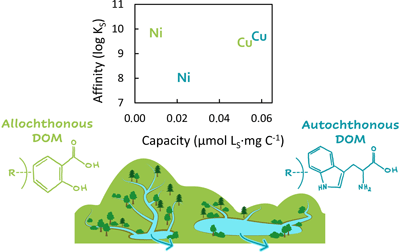Dedication to Prof. Edward Tipping
Environmental context. Unprecedented modification of the global nitrogen cycle by human activity is strongly imprinted in UK lakes by the changing abundance of nitrogen isotopes found in layers of lake sediment. UK lakes in the last century have responded to this change depending on their location, particularly if they are remote and occur above ~300-m altitude. Historical sediment nitrogen isotope data illustrate the impact of variable N sources on UK lakes, from fossil fuel combustion, synthetic fertilisers, to land use change and wastewater.
This article belongs to the collection: Dedication to Prof. Edward Tipping.
Environmental context. Ammonia emissions from inorganic nitrogen fertilisers used in agriculture can impact air quality, human health and ecology. This study quantifies such emissions and their controlling factors from UK and Ireland agricultural soils. Emissions are variable and, from non-urea fertilisers, substantially exceed maximum emission factors used by the UK Department for Environment, Food and Rural Affairs. This suggests that UK emission factors need to be refined further, with consideration of inter alia land-use, fertiliser type, soil pH and chemical inhibitors.
This article belongs to the collection Dedication to Prof. Edward Tipping.
Environmental context.
Rare earth elements (REEs) are technologically critical elements released into the environment by various anthropogenic activities, and whose ecotoxicological impacts are still largely unknown. REE binding to natural organic matter (NOM) is key to understand their fate and bioavailability in the environment. With this work, it is now possible to predict REE binding to NOM in various environments using various speciation software (ECOSAT, ORCHESTRA, Visual MINTEQ).
This article belongs to the collection Dedication to Prof. Edward Tipping.
Environmental context. It is useful to know the concentration of ‘labile’, or chemically active, metal in soils because it can be used to predict metal solubility and environmental impact. Several methods for extracting the labile metal from soils have been proposed, and here we have tested two of these to see how well the resulting data can be used to model metal solubility. Such mixed approaches can be applied to different soil types with the potential to model metal solubility over large areas.
This article belongs to the collection Dedication to Prof. Edward Tipping.
Environmental context. Natural dissolved organic matter strongly influences the biogeochemistry and bioavailability of trace metals in natural waters. Chemical equilibrium models are often used to predict the relative importance of the free metal cation, a recognised indicator of the metal’s bioavailability. Here we show how the nature of the organic matter varies between two lakes, affecting the measured speciation of copper and nickel, a result that challenges existing chemical equilibrium models.
This article belongs to the collection Dedication to Prof. Edward Tipping.
Environmental context. This study investigates how rare earth elements (REEs), such as europium (Eu), bind to organic matter. We are also gaining valuable insights into how these elements affect the structure of the organic matter that controls their mobility in natural systems, helping us to better understand the broader processes that govern the behaviour of trace metals in the environment.
This article belongs to the collection Dedication to Prof. Edward Tipping.
Environmental context. Mineral dust is an important external source of trace metals to the offshore ocean. Dust exposure to acids is a significant driver of the release of dissolved trace elements. This study provides an analysis of mineral dust interaction with acid, as a proxy for atmospheric processes. An insight is given into the processes that may occur in the atmosphere where desert dust may add nutrient or toxic metals to oceans.
This article belongs to the collection Dedication to Prof. Edward Tipping.



